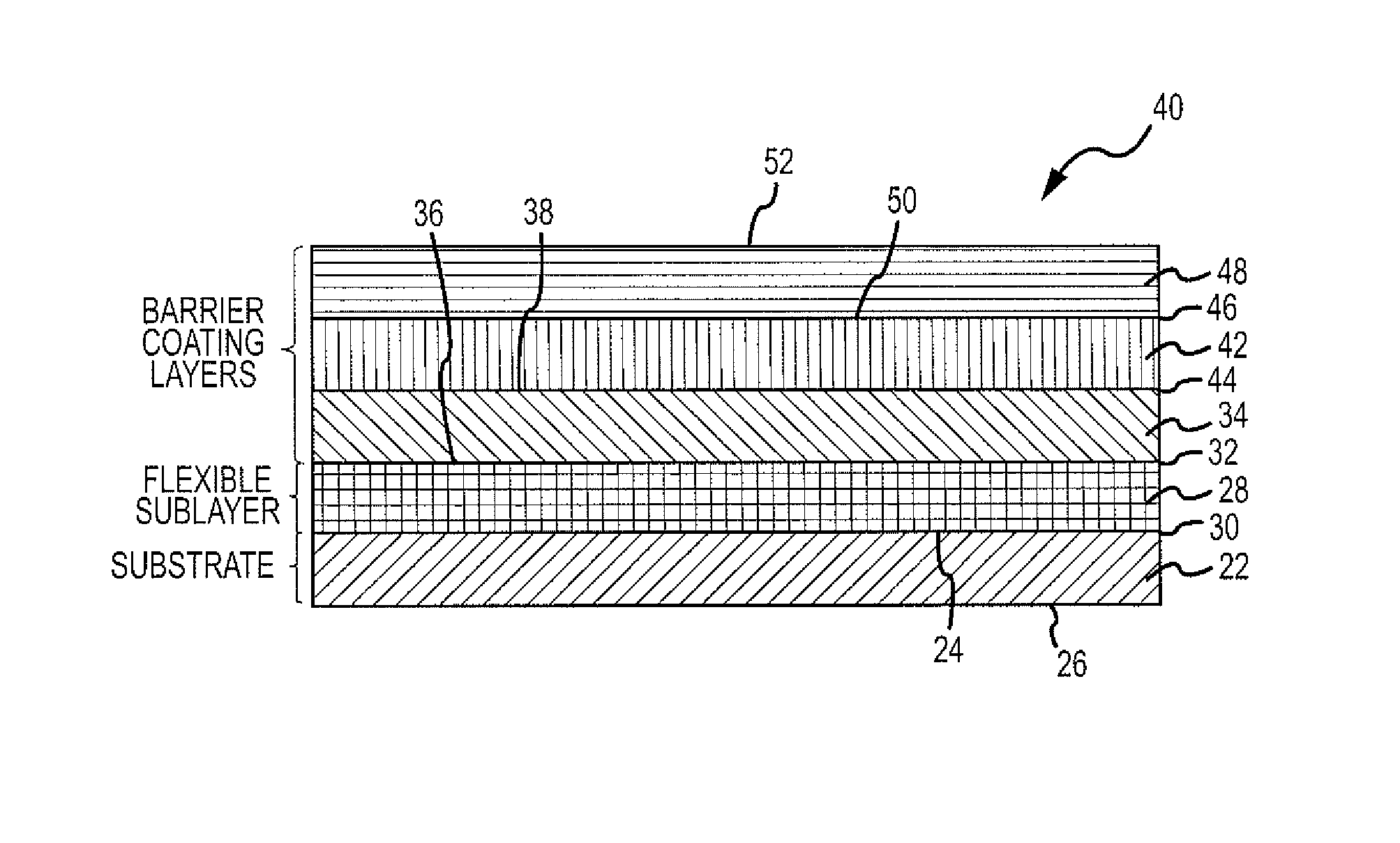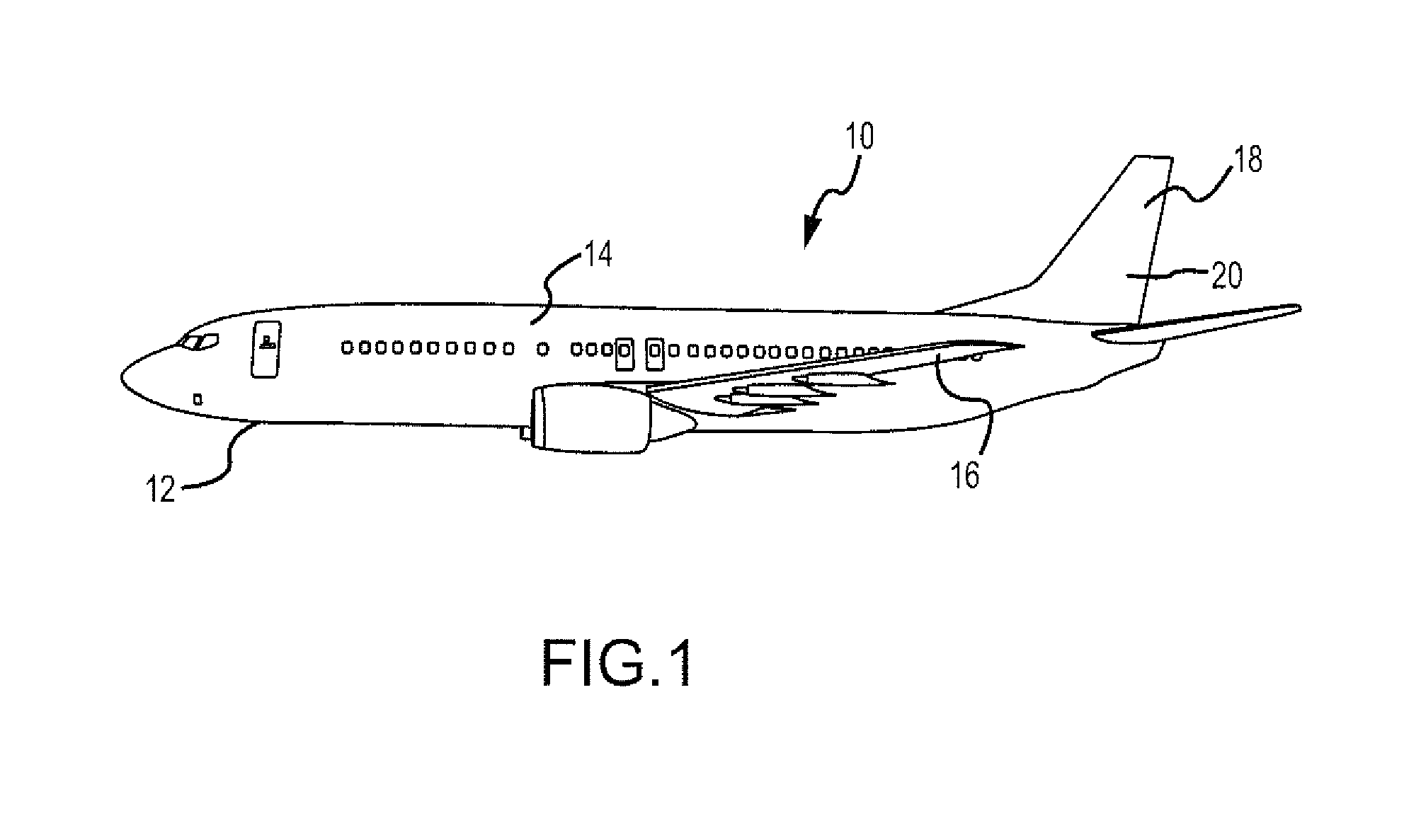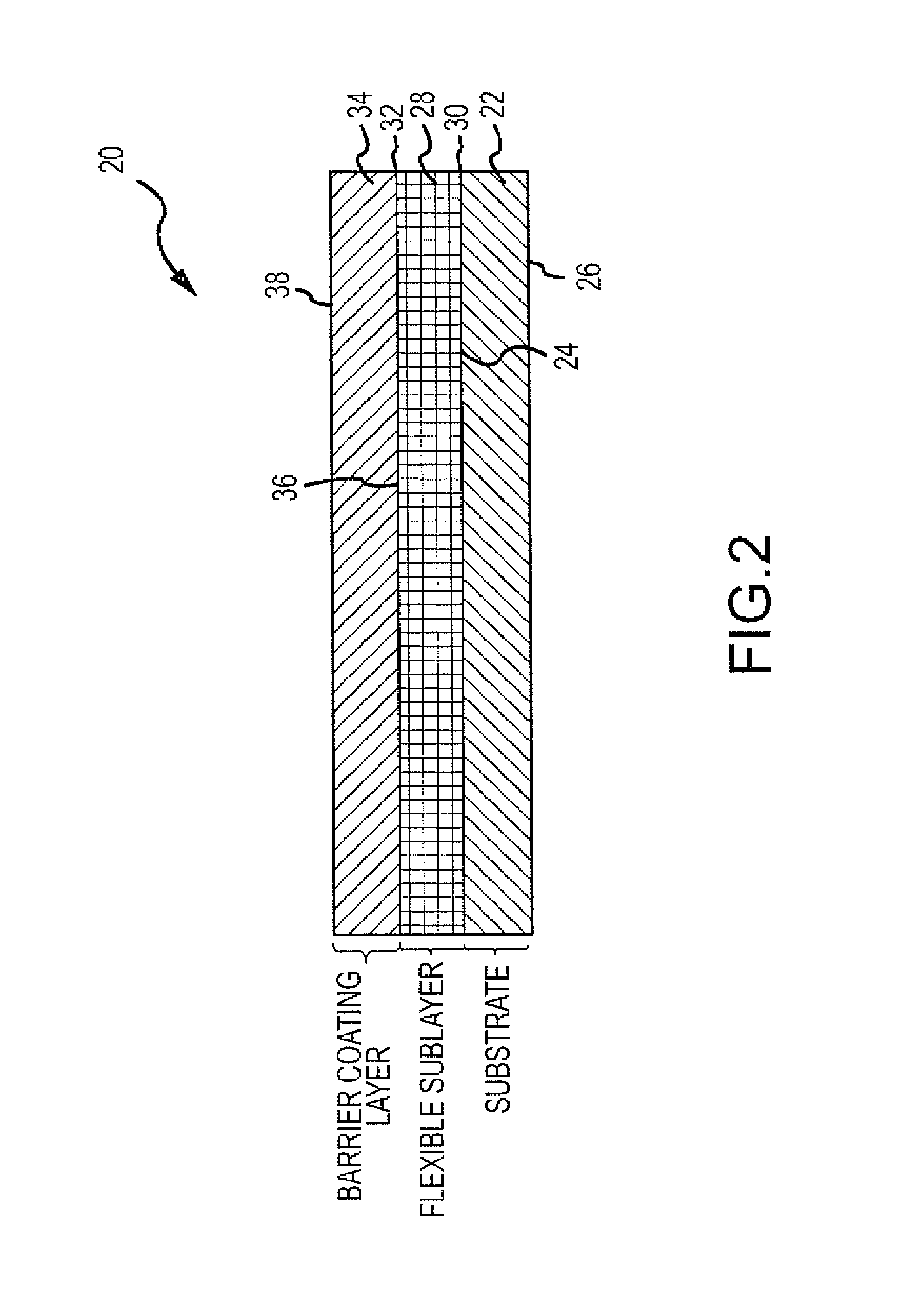Dense barrier-coating system and method
a barrier coating and dense technology, applied in the direction of chemistry apparatus and processes, synthetic resin layered products, transportation and packaging, etc., can solve the problems of reducing the mechanical properties reducing the oxidative degradation of pmcs and htpmcs, and htpmcs typically have limited lifetimes of approximately between 1000 hours, so as to reduce the nominal substrate temperature, reduce thermal energy transfer, and increase the lifespan of pmcs or h
- Summary
- Abstract
- Description
- Claims
- Application Information
AI Technical Summary
Benefits of technology
Problems solved by technology
Method used
Image
Examples
Embodiment Construction
[0021]Disclosed embodiments will now be described more fully hereinafter with reference to the accompanying drawings, in which some, but not all of the disclosed embodiments are shown. Indeed, several different embodiments may be provided and should not be construed as limited to the embodiments set forth herein. Rather, these embodiments are provided so that this disclosure will be thorough and complete and will fully convey the scope of the disclosure to those skilled in the art.
[0022]The disclosure provides for a fully dense barrier-coating system and method that protects polymer-matrix composites (PMCs) and high-temperature polymer-matrix composites (HTPMCs) from thermo-oxidative degradation. For purposes of this application, “fully dense” means that oxygen and moisture cannot penetrate the coating. The system and method of the disclosed embodiments may be used on PMCs and HTPMCs for aircraft, spacecraft, watercraft, and other craft, engine and blown-flap, exhaust-washed structu...
PUM
| Property | Measurement | Unit |
|---|---|---|
| temperature | aaaaa | aaaaa |
| thickness | aaaaa | aaaaa |
| thickness | aaaaa | aaaaa |
Abstract
Description
Claims
Application Information
 Login to View More
Login to View More - R&D
- Intellectual Property
- Life Sciences
- Materials
- Tech Scout
- Unparalleled Data Quality
- Higher Quality Content
- 60% Fewer Hallucinations
Browse by: Latest US Patents, China's latest patents, Technical Efficacy Thesaurus, Application Domain, Technology Topic, Popular Technical Reports.
© 2025 PatSnap. All rights reserved.Legal|Privacy policy|Modern Slavery Act Transparency Statement|Sitemap|About US| Contact US: help@patsnap.com



